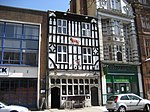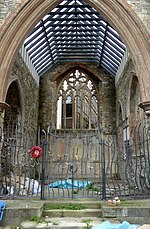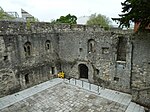Castle Snooker Club

The Castle Snooker Club was a billiard hall at 57-59 Castle Way, Southampton, England, opened in 1970 by professional snooker player Bernard Bennett. Snooker historian Clive Everton described it as "the earliest of the new-style snooker establishments which were to replace the dingy, disreputable billiard halls of old." It was the venue for Bennett's 1971 challenge match against Rex Williams for the World Billiards Championship. Williams retained the title, winning by 9,250 point to 4,058. The 1972 World Snooker Championship qualifying match between Bennett and Graham Miles was held at the club; Miles won 15–6. As of 1999, professional player Duncan Moore coached at the club. Bennett died in 2002, having seen the Club resognised as an accredited centre by snooker's governing body. The club closed in June 2007.
Excerpt from the Wikipedia article Castle Snooker Club (License: CC BY-SA 3.0, Authors, Images).Castle Snooker Club
Castle Way, Southampton St Mary's
Geographical coordinates (GPS) Address Nearby Places Show on map
Geographical coordinates (GPS)
| Latitude | Longitude |
|---|---|
| N 50.89917 ° | E -1.40466 ° |
Address
The Allsports Academy
Castle Way 57
SO14 2AU Southampton, St Mary's
England, United Kingdom
Open on Google Maps











